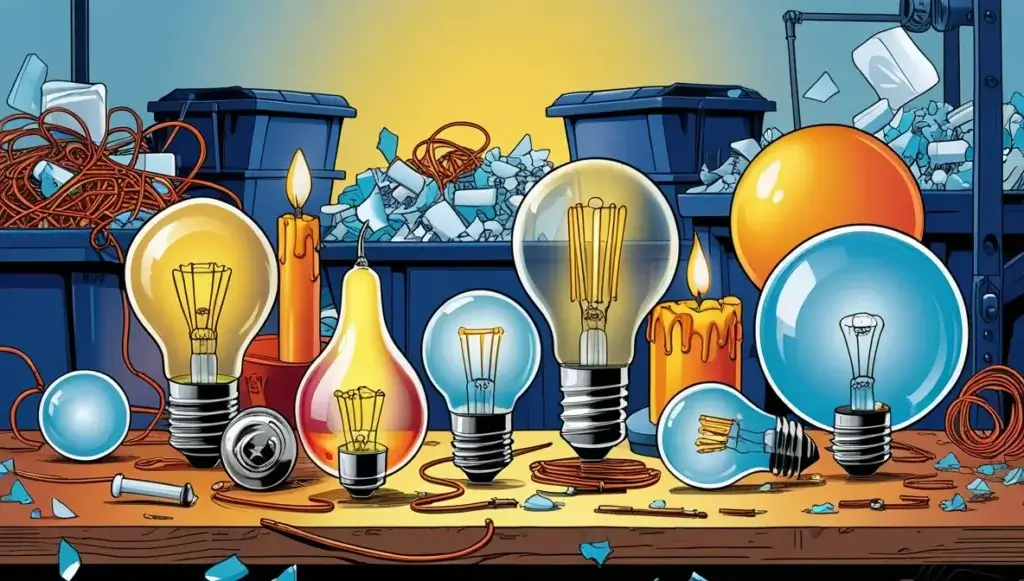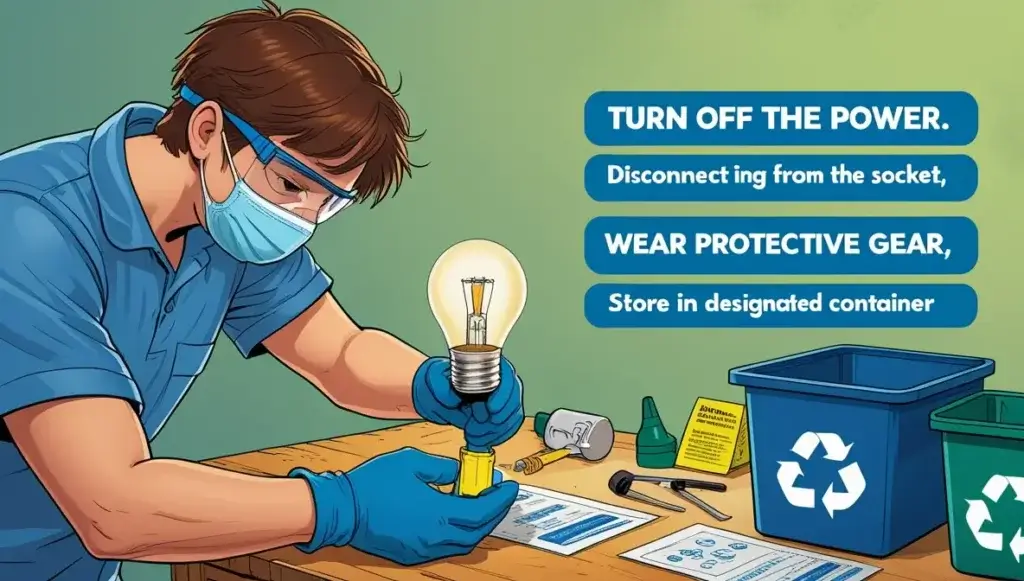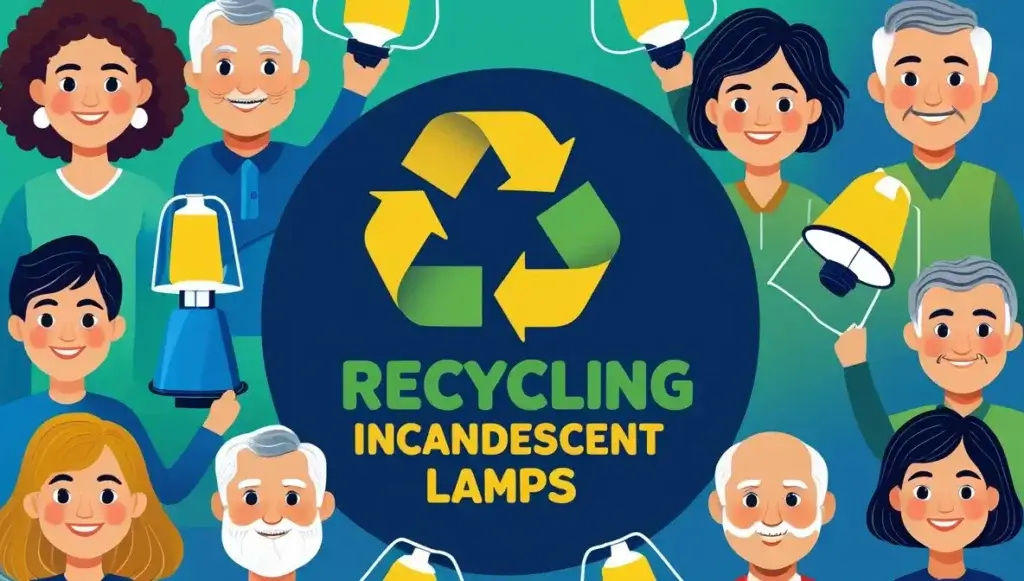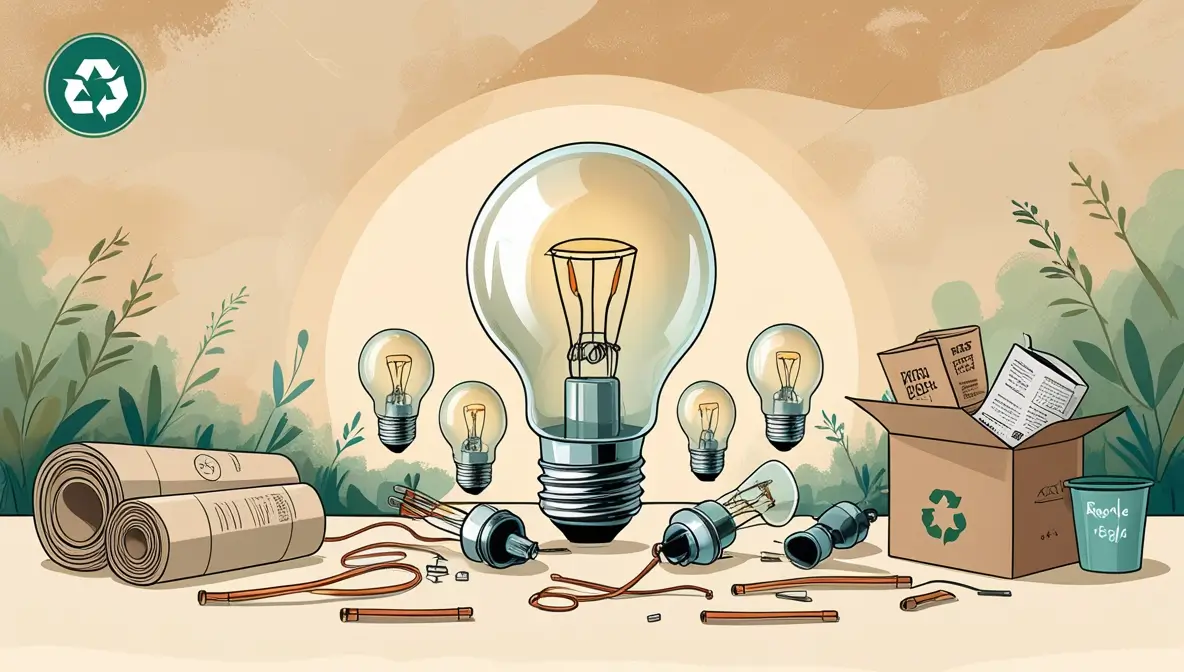Recycling incandescent bulbs can be tricky. They contain materials that need proper disposal.
Knowing the right way to recycle them is essential. Incandescent bulbs, while not as common now, still exist in many homes. These bulbs have unique components that require special handling during recycling. Unlike LED or CFL bulbs, they don’t contain hazardous materials like mercury.
But, they still need to be recycled correctly to avoid harming the environment. This guide will help you understand the steps to recycle incandescent bulbs safely. You’ll learn why it’s important and how you can contribute to a greener planet by disposing of them the right way. Let’s dive in and explore the best methods for recycling these old light sources.
How to Recycle Incandescent Bulbs

Incandescent bulbs, owing to their warm and natural light, have been in wide application for many years. Even though currently they are being replaced by energy-efficient alternatives like LEDs, they still manifest different types. It is very important to recycle incandescent bulbs in order to reduce waste and decrease environmental impacts.
Step-by-Step Recycling of Incandescent Bulbs
Since incandescent bulbs contain materials such as glass and metal, they require special handling when being disposed of. Here’s how to recycle them properly:
- Carefully Remove the Bulb – Make sure the light is switched off and the bulb is cool before handling it. Unscrew it carefully from the socket to avoid breakage.
- Place in a Protective Container – So that if the bulb breaks, glass shards would not spread around, place the bulb in a box or wrap it in newspaper.
- Drop It Off at a Recycling Center – Most local recycling centers accept incandescent bulbs. Check with your municipality or waste management service for the location of the nearest drop-off location.
If no recycling facility is available, you can safely dispose of incandescent bulbs in regular household waste. Never throw them into glass recycling, however, because their composition is different from the other glass material.
Types Of Incandescent Bulbs
1. Standard Incandescent Bulbs
Overview: Standard incandescent bulbs are the most traditional and widely used type. They come in various shapes and sizes, such as A19, globe, and candle-shaped bulbs.
How They Work:
Inside each bulb, a thin tungsten filament is heated by electricity until it glows, producing light. However, a large amount of energy is wasted as heat, making these bulbs inefficient.
Key Features:
- Provide warm, soft light suitable for home and office use.
- Generally last 750 to 1,200 hours, which involves replacing them more often.
- Not energy-efficient when set against their modern counterparts, like LEDs.
- Available in different wattages, usually 40W, 60W, 75W, and 100W.
Recycling Considerations:
- Standard incandescent bulbs do not contain hazardous materials but need appropriate disposal. Though most standard bulbs are not widely accepted in traditional recycling programs, some specialized recycling centers take them.
2. Halogen Incandescent Bulbs
Overview:
Halogen bulbs represent an upgraded version of the simple incandescent light bulbs. They are like incandescent bulbs but with a small amount of halogen gas – iodine and bromine are the most common types – which prolongs the life of the bulb and enhances efficiency.
How They Work: The tungsten filament inside the bulb burns at higher temperatures than in standard incandescent bulbs. The halogen gas recycles the tungsten, allowing the filament to have a longer life and give a brighter, whiter light.
Key Features:
- More energy-efficient than regular incandescent bulbs, using about 20–30% less energy.
- Are brighter, whiter, and therefore suitable for task lighting, floodlights, and headlights in vehicles.
- Have a longer life than regular incandescent bulbs, burning from 2,000 to 4,000 hours.
- Dimmable versions are also available.
Recycling Considerations:
- They are usually accepted at hazardous waste disposal sites or recycling centers.
- Materials in halogen bulbs should not go into landfills.
- Some contain quartz glass that requires specialized recycling methods.
Safety Precautions for Handling and Recycling Incandescent Bulbs

Incandescent bulbs are made of thin glass and metal components, which can be easily broken and hence considered dangerous. Proper handling is indispensable in order to prevent injuries and ensure safe disposal or recycling. The following are key safety precautions to consider when handling incandescent bulbs.
1. General Safety Tips for Handling Incandescent Bulbs
- Handle with Care: Incandescent bulbs can be fragile; they can only withstand minor drops or improper handling before breaking apart.
- Wear Gloves: Glass may shatter, and your hands need to be protected.
- Take in Sealed Container: If the bulbs have been used, are unused but no longer wanted, put them in a sturdy, sealed container for transport during disposal or recycling. This is to avoid breakage and injury. Avoid The Use Of Excessive Force — When screwing in or removing a bulb, turn it gently to avoid breakage in the socket.
2. Broken Bulb Management
When an incandescent bulb breaks, it introduces sharp glass shards and fine tungsten filament particles into your space, which is particularly dangerous. Cleaning this safely involves:
Safe Cleaning Steps
- Keep People and Pets Away – Keep anyone from stepping on the broken glass.
- Use a Broom and Dustpan – Glass fragments should never be picked up by hand; use a broom or brush to safely collect the pieces.
- Place Glass in a Sealed Container– Utilize a stiff container, such as plastic or metal, to store glass so it cannot penetrate bags.
- Do Not Vacuum – The vacuum cleaner can distribute fine particles into the air, creating more danger. Instead, smaller fragments may be picked up using a damp paper towel.
- Proper Disposal – It is best to contact local waste management services regarding broken bulbs, and if alternatives exist, one should not send them out with the regular household trash.
3. Safety Equipment to Handle Safely
Wear suitable protective equipment while handling or when taking out procedures of incandescent bulbs, and particularly if the bulbs have broken.
- Mask or Respirator: Helps not to inhale the fine glass particles and dust of a broken bulb.
- Gloves –Save your hands from glass sharp edges and dust
- Safety Glasses– Prevent glass fragments from getting accidentally into your eyes.
Local Programs for Recycling Incandescent Lamps

Recycling the incandescent bulbs is important in waste management and environmental safety. While these bulbs do not contain toxic materials such as mercury contained in CFLs, they nonetheless need proper waste disposal to minimize that which goes into the landfills. Most of the local recycling programs offer drop-off locations to which you can go to recycle your incandescent bulbs. Here’s how to find the best options in your area.
Finding Local Recycling Centers
Most communities have specialized recycling centers that take in the incandescent bulbs, and all it takes is these few steps to find one:
- Inquire at Hardware Stores – Certain home improvement retailers, such as The Home Depot or Lowe’s, have recycling bins for used light bulbs. Call ahead to confirm if they accept incandescent bulbs.
- Search online through a search engine or on websites such as Earth911.org, RecyclingCenters.org, among others, which offer the nearest location for recycling.
- Check Your Local Waste Management Office: Check your local city or county waste management office for a list of accepted drop-off locations and guidelines on safe disposal.
- Visit Community Hubs: Many libraries, schools, and community centers are starting to house recycling programs, including drop-off locations for lighting bulbs.
Community-Based Recycling Initiatives

In addition to government-run programs, many local community groups promote recycling efforts, including incandescent bulb disposal.
- Show Up to Your Environmental Events: Most city-sponsored sustainability events/eco-fairs include booths specifically on recycling. Be sure and ask an event organizer if any resources are provided for recycling fluorescent bulbs.
- Attend Community Recycling Events: Communities periodically host collection drives where bulbs are accepted along with many other items.
- Ask Your Neighbors and Community Groups: Many environmental groups, especially homeowners’ associations, will either hold collections themselves or be in contact with entities that do so.
- Share the Recycling Information: Share the green awareness, and help others learn something new. Sending information about community recycling options across social media groups, neighborhood applications, or any community board creates awareness.
Mail-in Recycling Options
Mail-In programs help you recycle bulbs safely. You order a recycling kit online. The kit includes a box and instructions. Place the bulbs in the box. Seal it well to avoid breakage. Then, mail the box back. The company will handle the recycling process. It’s easy and safe.
Several companies offer mail-in recycling. Here are some services:
| Company | Service |
|---|---|
| RecyclePak | Offers prepaid recycling kits |
| TerraCycle | Specializes in hard-to-recycle items |
| LightRecycle | Focuses on light bulb recycling |
Diy Recycling Techniques
Old incandescent bulbs can become beautiful vases. Carefully remove the base and inner parts. Fill with water and add small plants. They also make unique ornaments. Paint the outside or fill with glitter. Hang them with string or ribbon. Bulbs can also be used as storage. Store small items like beads or spices. Use them in craft projects with kids. Supervise children during these activities. Ensure safety with gloves and goggles.
Turn bulbs into cute animals. Paint faces and add ears. Create mini hot air balloons. Use colored paper and string. Make candle holders too. Place a small candle inside. Bulbs can become tiny terrariums. Add soil, moss, and tiny plants. These projects are fun and eco-friendly. Plus, they reduce waste. Get creative and enjoy recycling.
Proper Disposal Methods
Take old bulbs to hazardous waste facilities. They handle dangerous waste. These places are safe and follow rules. Check local websites to find one. Keep bulbs in a box or bag. This stops them from breaking. Never throw bulbs in regular trash. They can harm people and animals.
Some landfills accept bulbs. Call first to check. Not all landfills take them. Wrap bulbs in paper or bubble wrap. This protects them from breaking. Take them to the right area in the landfill. Follow workers’ instructions. Do not mix bulbs with regular trash. It is very important.
Benefits Of Recycling
Recycling incandescent bulbs helps keep waste out of landfills. Each bulb that gets recycled means less trash. This helps the environment. Waste in landfills can harm the earth and water. Recycling also saves space in landfills. It’s a small step that makes a big difference.
Recycling bulbs conserves valuable resources. The materials in bulbs can be reused. Glass and metal from bulbs can have new life. This means less need to mine new materials. Reusing resources saves energy. It also reduces pollution. Every recycled bulb helps the planet.
Credit: www.co.burlington.nj.us
Credit: www.grangerwasteservices.com
Frequently Asked Questions
Can You Recycle Incandescent Bulbs?
Yes, you can recycle incandescent bulbs, but not through regular recycling bins. Many local recycling centers and certain retailers accept them. Check with your local waste management services for specific instructions.
Where To Recycle Incandescent Bulbs?
You can recycle incandescent bulbs at many home improvement stores and recycling centers. Check if they have specific drop-off bins for bulbs.
Why Recycle Incandescent Bulbs?
Recycling incandescent bulbs helps reduce landfill waste and recovers materials like glass and metal. Proper recycling prevents harmful substances from contaminating the environment.
Are Incandescent Bulbs Hazardous?
Incandescent bulbs are not hazardous like CFLs or LEDs but should still be recycled properly. They contain materials that can be reused.
Conclusion
Recycling incandescent bulbs helps protect our environment. Always handle bulbs carefully to avoid breaks. Dispose of them at designated recycling centers. Follow local guidelines for safe recycling. Encourage friends and family to recycle too. Every small action adds up. Together, we can make a difference.
Thank you for reading and doing your part.

My name is Mahi Uddin, and I’m a blog writer with over two years of experience specializing in creating engaging, informative content using AI tools. I contribute to InExDecor.com, where I share creative ideas and practical tips for transforming interior and exterior spaces into beautiful, functional environments. With a passion for storytelling and a knack for blending creativity with technology, I strive to craft blogs that not only inform but also inspire readers. When I’m not writing, you can find me exploring design trends or enjoying a good book with a cup of coffee.








